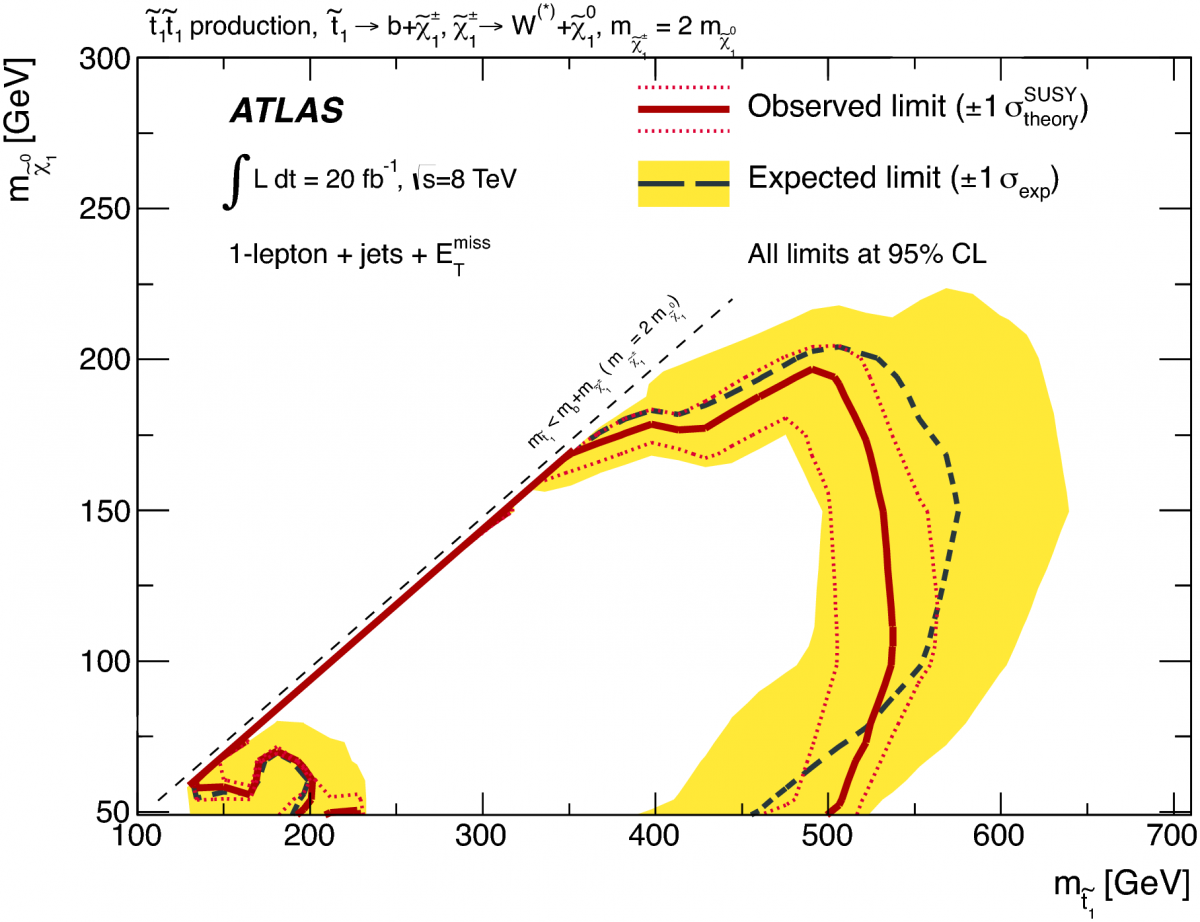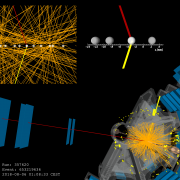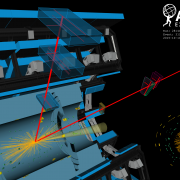Access to Collaboration Site and Physics Results


Completion of the analysis of 2012 data recorded by the ATLAS detector at the LHC’s collision energy of 8 TeV has significantly improved our capability of finding a supersymmetric partner of the top quark – also known as the top squark or the stop.
Supersymmetry is a theoretical framework that builds upon the Standard Model’s strong foundation to create a more comprehensive picture of our Universe. It introduces new – as of yet undetected – partners to all known particles. A fascinating feature of the theory is that its lightest particles could make up dark matter.
A light Higgs boson is a natural feature of supersymmetry if the top squark (a.k.a. stop) is not too heavy, making it a candidate for discovery at the LHC. Depending on the mass and decay mode of the top squark, various signatures in the ATLAS detector are possible. This includes events featuring multiple jets, one charged lepton and a large amount of missing transverse momentum. Missing transverse momentum is a key feature because the top squark decay is assumed to result in the production of the stable lightest supersymmetric particle (LSP), which in this analysis is taken to be the neutralino. This particle is stable and weakly interacting, and thus cannot be detected by ATLAS resulting in a missing amount of momentum in the detector.
The analysis consists of 15 search regions targeting various top squark decay modes and mass ranges. These regions are sensitive to the following two mechanisms: the decay of a top squark into a top quark and the LSP, and the decay into a bottom quark and another supersymmetric particle – the chargino, which then decays into a W boson and the LSP. New analysis techniques such as the identification of low-momentum leptons and boosted top quarks were used to extend the sensitivity of the analysis in comparison to previous measurements. As no significant excess over the expected background was observed, the data is used to exclude a large range of possible top squark and LSP masses. With higher collision energy expected in the LHC’s next run, the chances of observing a possible top squark increases. The hunt for the stop is not over yet.








